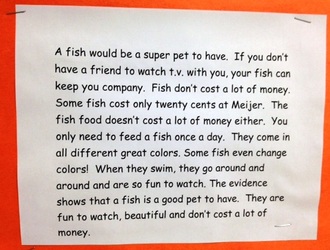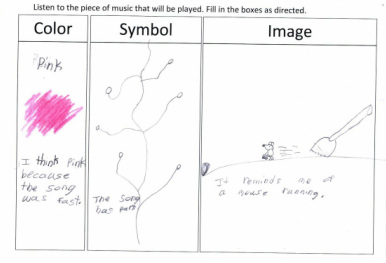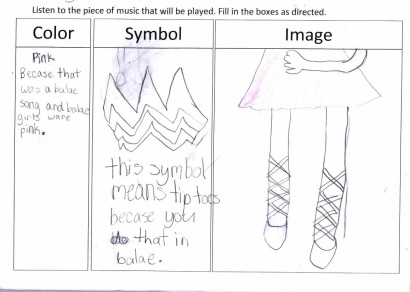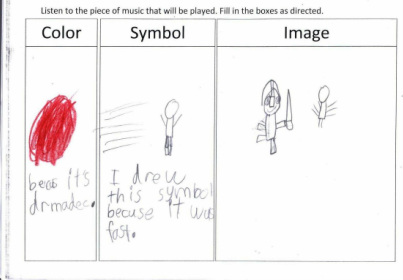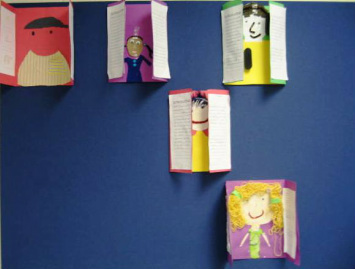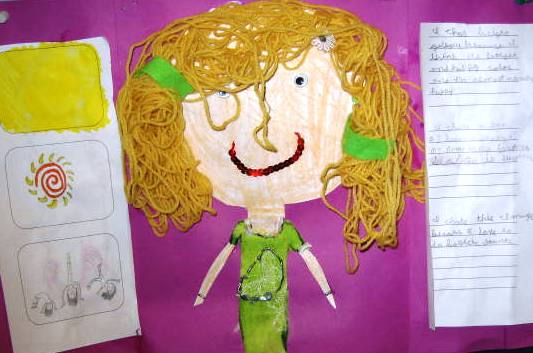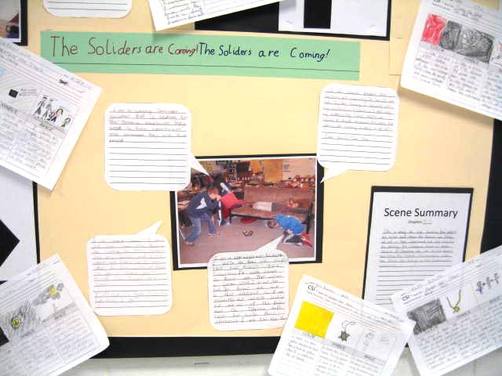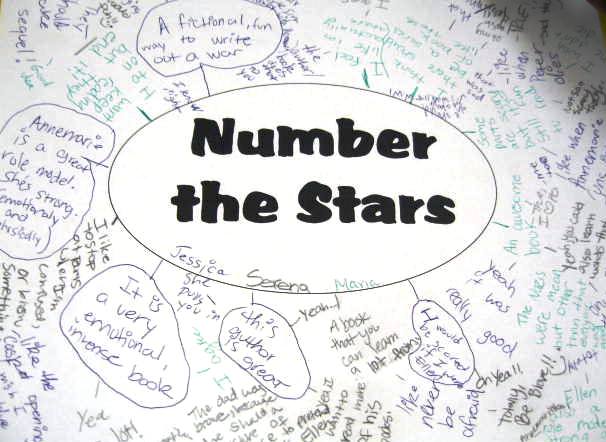Curriculum Connections
Template or No Template...
This is thinking, why are we making it look like worksheets?
When I hear comments such as this, I believe they are made as much out of confusion as frustration. There is much to be said for both sides of the argument. In fact, we could do a Tug of War about this! So here are my tugs for and against templates:
Template Pros:
They provide teachers and students a transition from the worksheet world to Visible Thinking
Students and teachers use templates to organize their thinking
It is a structure that scaffolds students and teachers toward establishing the thinking routine
and eventually is no longer necessary and falls away
Template Cons:
A template structure places limits on where a student might go with his/her thinking
Part of making thinking visible involves being able to produce it in many different ways:
verbally, electronically and on paper either pictorially or with words
We need to feel comfortable with the idea that thinking is messy
What is your opinion?
You can add your thinking about using templates to the Blog Page (under "more" at the top of
this page).
Take a look photos of routines done without templates below.
When I hear comments such as this, I believe they are made as much out of confusion as frustration. There is much to be said for both sides of the argument. In fact, we could do a Tug of War about this! So here are my tugs for and against templates:
Template Pros:
They provide teachers and students a transition from the worksheet world to Visible Thinking
Students and teachers use templates to organize their thinking
It is a structure that scaffolds students and teachers toward establishing the thinking routine
and eventually is no longer necessary and falls away
Template Cons:
A template structure places limits on where a student might go with his/her thinking
Part of making thinking visible involves being able to produce it in many different ways:
verbally, electronically and on paper either pictorially or with words
We need to feel comfortable with the idea that thinking is messy
What is your opinion?
You can add your thinking about using templates to the Blog Page (under "more" at the top of
this page).
Take a look photos of routines done without templates below.
Visible Thinking Routines Without Templates
Making Meaning and Visible Thinking
First and Fourth Grade Examples
In preparing for the February and March Curriculum Connections PD for k-5 teachers, I studied the Making Meaning TE looking for ways Visible Thinking routines might strengthen student learning. Coincidentally, it was at this point in the Making Meaning curriculum that students were working with the reading strategy of wondering. I noticed that the lessons I was looking at (An Extraordinary Egg in first grade; El Camino del Amelia in fourth grade) each began by asking students to look at the cover and tell what they were wondering about the story. By expanding that to "What do we see? What might you think about that? What does that make you wonder?; students get stronger direction to look closely and generate some thinking about what is being seen. That is a small "tweek" to the lesson that teachers have told me yields large returns.
Making Meaning stories are read in sections over two or three days. At the stopping point, students are often asked to recall what has happened in the story so far and make inferences about the characters and events. Initiating a Circle of Viewpoints or Step Inside at this point would allow students the opportunity to synthesize these connections at a deeper level. Sometimes, teachers may have to tweek the stopping point in the story so students have enough information to make inferences (this was true in An Extraordinay Egg). But again, it is a small change that yields a big return and all very much within our curriculum!
Making Meaning stories are read in sections over two or three days. At the stopping point, students are often asked to recall what has happened in the story so far and make inferences about the characters and events. Initiating a Circle of Viewpoints or Step Inside at this point would allow students the opportunity to synthesize these connections at a deeper level. Sometimes, teachers may have to tweek the stopping point in the story so students have enough information to make inferences (this was true in An Extraordinay Egg). But again, it is a small change that yields a big return and all very much within our curriculum!
Adapting Visible Thinking Strategies to Special Needs Students
When building staffs explore Visible Thinking together, teachers of special needs students see the value of creating a culture of thinking but raise questions about how to appropriately adapt these ideas for their classrooms. Here are two examples of some ideas that have come out of these conversations:
English Language Learners
In the context of learning to read and comprehend non-fiction text, English Language Learners used the information from reading about pets to make a claim about the best pet to own and then reason with the evidence to support it. Combining their reading with thinking about the text to make a claim is a powerful way to move comprehension beyond reiterating facts.
English Language Learners
In the context of learning to read and comprehend non-fiction text, English Language Learners used the information from reading about pets to make a claim about the best pet to own and then reason with the evidence to support it. Combining their reading with thinking about the text to make a claim is a powerful way to move comprehension beyond reiterating facts.
Moderately Cognitively Impaired Students
My conversation with a teacher of special needs students who have few communication skills really made me think deeply about how to engage thinking and create avenues for understanding in a way that would not require language in any form. I remembered Chapter 7 of the Making Thinking Visible book: Creating a Place Where Thinking is Valued, Visible and Actively Promoted. There are three case studies in this chapter. Making Room for Reflection describes the process of reflecting on learning through art. I encouraged the teacher to read this and consider how it might be a valuable experience for her students. About a month later, I followed-up with this teacher and this is what she said:
My conversation with a teacher of special needs students who have few communication skills really made me think deeply about how to engage thinking and create avenues for understanding in a way that would not require language in any form. I remembered Chapter 7 of the Making Thinking Visible book: Creating a Place Where Thinking is Valued, Visible and Actively Promoted. There are three case studies in this chapter. Making Room for Reflection describes the process of reflecting on learning through art. I encouraged the teacher to read this and consider how it might be a valuable experience for her students. About a month later, I followed-up with this teacher and this is what she said:
We have been doing a “Thought of the Day” and keeping these as a journal of our activities. I will teach a lesson, then we go to our desks and talk about the concepts we have just learned about. I ask questions to ensure understanding and the students answer by using their words, communication devices or by using gestures. Then I fill out the “Thought of the Day” form based on what I think about the concept and present it to the students. I talk about my thought process and why I drew what I did. I then ask the students to fill out their own “Thought of the Day” form. The staff in my classroom need to help in this process as far as helping the students write their name and the name of the concept they are thinking about (our fine motor skills present many difficulties when it comes to writing). But then the students are free to choose what colors they want to use and to “draw” whatever they are thinking about. Afterwards, I ask them about their drawings. I ask simple yes or no questions to make sure that I am understanding what it is that they are trying to communicate through their drawings. The students answer me in the same fashion as I mentioned earlier. Many times they will tell me “No!” and I have to try several times until I hit on what they are trying to represent. I then write on the their forms what each student is trying to tell the reader about.
When I asked this teacher if she thought that this process was helping in her student' concept formation, she replied:
When I asked this teacher if she thought that this process was helping in her student' concept formation, she replied:
I think so! At least, I hope so! But the students seem to be more engaged in the activities and they are answering questions correctly (for the most part!) so I am definitely happy with the results!I think so!
Daily 5 and Routines
Independent Think Time
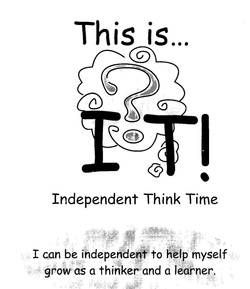
First grade teachers are using thinking routines with writing to engage students as they work independently while fellow classmates are meeting in guided reading groups. By combining a routine that is very familiar with prompts that encourage deeper thinking about content, this idea lifts Daily 5 choices way beyond busy work. Students have Thinking Logs where they record their thoughts to a question or prompt. An example might be, "Write a headline about what we have learned so far about rocks."
Using Routines in Music
During the August PD, I introduced our music and art teachers to Visible Thinking and a sister project at Project Zero, Artful Thinking. One of our brand new elementary music teachers jumped right and tried the Color-Symbol-Image routine with 2nd and 4th grade students. She asked them to listen to a musical selection and then respond. Samples of the work are below. Notice the difference in the level of thinking about color in the two that chose the color pink.
Other routines that music teachers have been using are:
Generate, Sort, Connect, Elaborate for identifying note patterns and Chalk Talk.
Generate, Sort, Connect, Elaborate for identifying note patterns and Chalk Talk.
Fifth Grade Social Studies
As teachers become more comfortable with a variety of routines and begin to plan routines based on the types of thinking they would like students to be doing, elements of more than one routine begin to appear in instruction as well as in student projects. An example is this culminating project for a 5th grade study of early European explorers. The work combines the perspective taking of the Step Inside routine with the thoughts that are generated by Compass Points. Take a look at the slide show below.
Starting the Year With Routines
"What are some important rules to keep our classroom safe?"
"What excites you about 4th grade?"
"What materials do you see in the science kit and what do you think we will do with them?"
"What does it mean to think?"
"Why do we work with partners?"
"What color, symbol and image would you choose to tell about yourself?"
These are questions that have been raised in classrooms at all grade levels this month and answered by many voices through Visible Thinking routines. The power of using these routines is that every student has the opportunity to contemplate, contribute and make thinking visible setting a year-long pattern of classroom culture. A sample of routines used for this purpose have been: Chalk Talk, I Used to Think...Now I Think, Compass Points. See- Think-Wonder and Color-Symbol-Image.
Take a look in the photo gallery for more Starting the Year images.
"What excites you about 4th grade?"
"What materials do you see in the science kit and what do you think we will do with them?"
"What does it mean to think?"
"Why do we work with partners?"
"What color, symbol and image would you choose to tell about yourself?"
These are questions that have been raised in classrooms at all grade levels this month and answered by many voices through Visible Thinking routines. The power of using these routines is that every student has the opportunity to contemplate, contribute and make thinking visible setting a year-long pattern of classroom culture. A sample of routines used for this purpose have been: Chalk Talk, I Used to Think...Now I Think, Compass Points. See- Think-Wonder and Color-Symbol-Image.
Take a look in the photo gallery for more Starting the Year images.
5th Grade Literature
I have seen many examples all over the district and across the grades of how teachers are weaving Visible Thinking routines throughout lessons and units and are discovering multiple layers of depth of student thinking and understanding that up until now has been untapped. By highlighting an example of one such project from Lisa Carruther's 5th grade class at Leonard, I hope you will begin thinking about how this type of planning could work with your curriculum next year.
In Lisa's explanation about the project below, notice that she mentions the curriculum pieces that this lesson covers. Visible Thinking helps students synthesize the curriculum pieces into a stronger, more lasting conceptual understanding. This unit has always been a favorite among students in Lisa's 5th grade classes. This year she was amazed at the depth of learning and connections made through the Visible Thinking routines. Lisa says, "It was definitely powerful! Thanks to Visible Thinking, this year's unit lessons made a greater impact on all of us."
Our class read the book Number the Stars by Lois Lowry as a class read aloud. Students dissected the story by studying its story elements that included the setting, characters, plot, problem/solution and climax.
Throughout our reading, students practiced making predictions, decoding and comprehension skills while appreciating a well written story from the historical fiction genre.
In Lisa's explanation about the project below, notice that she mentions the curriculum pieces that this lesson covers. Visible Thinking helps students synthesize the curriculum pieces into a stronger, more lasting conceptual understanding. This unit has always been a favorite among students in Lisa's 5th grade classes. This year she was amazed at the depth of learning and connections made through the Visible Thinking routines. Lisa says, "It was definitely powerful! Thanks to Visible Thinking, this year's unit lessons made a greater impact on all of us."
Our class read the book Number the Stars by Lois Lowry as a class read aloud. Students dissected the story by studying its story elements that included the setting, characters, plot, problem/solution and climax.
Throughout our reading, students practiced making predictions, decoding and comprehension skills while appreciating a well written story from the historical fiction genre.
As a culminating activity, students worked in groups and revisited assigned chapters in the story. The challenge was to delineate the main events of the chapters read to show plot development then decide on only one snapshot to present to the class. Students created a Headline and placed themselves into the scene with the help of the Circle of Viewpoints. Once the group collaborated on the snapshot, students had to Step Inside their role and share their specific perspective. This is called deep thinking!
Students continued to deepen their understanding of Number the Stars by sharing insights with a team Chalk Talk and looking even closer at the story withh the Color-Symbol-Image routine.
Students continued to deepen their understanding of Number the Stars by sharing insights with a team Chalk Talk and looking even closer at the story withh the Color-Symbol-Image routine.
